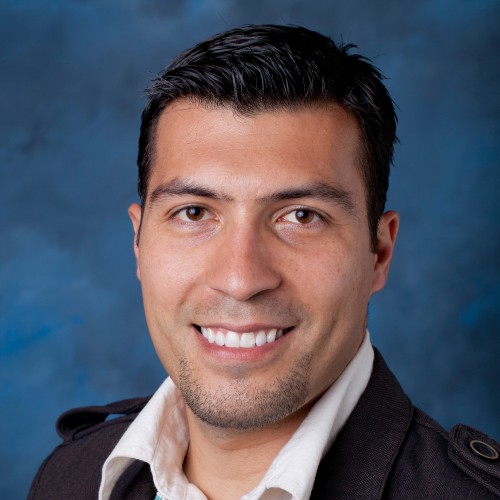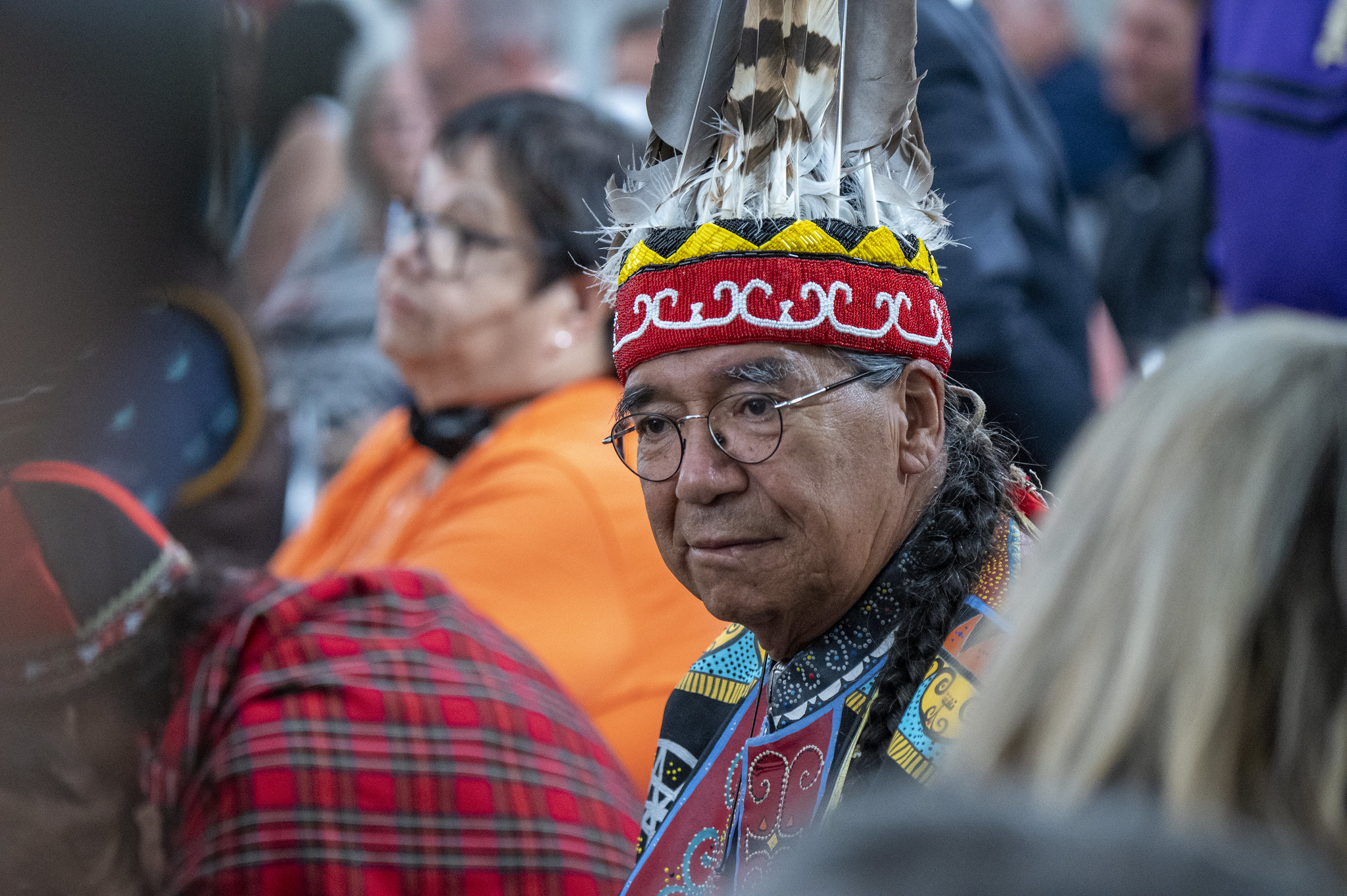
Imagine, whether you have children or not, the coerced or forcible removal of children sent off to (Catholic) residential (boarding) schools. Contemplate the impact of violence and erasures enacted by school staff. Imagine your child coming home with the scars of cultural, physical, or sexual violence or your child never returning, buried in one of thousands of unmarked graves on school grounds. What if you had no recourse? How far would the trauma reverberate for you and future generations?
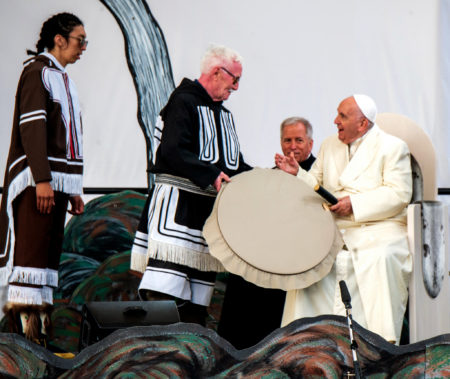
For over 150 years, beginning in the late 19th century, hundreds of thousands of indigenous children passed through boarding schools in the U.S. and Canada alone, many of them run by the Catholic church. In 2015, Canada set up a truth and reconciliation commission to listen to survivors and consider formal steps toward repairing harms. Deb Haaland, the U.S. secretary of the Interior, has established the Federal Indian Boarding School Initiative, to investigate the more than 400 indigenous boarding schools that operated in the U.S. starting in 1819, including 53 school sites with unmarked graves.
The theft of indigenous land and children around the globe has been codified in law for centuries (ca. 1493), with the Catholic Church’s Doctrine of Discovery as the cornerstone of global colonization efforts, including in North America. The Vatican is expected to issue a new statement on this religious doctrine in the near future, responding to activists and a promise made by Pope Francis as he departed Canada this past summer. The Pope, a Jesuit priest, made a penitent pilgrimage to Canada asking indigenous First Nations community forgiveness for the centuries of atrocities committed by the Church and Church-run residential schools. He called it a first step. “How evil it is to break the bonds uniting parents and children, to damage our closest relationships, to harm and scandalize the little ones,” he said.
During this season and Indigenous Heritage Month, many of us ask: Is forgiveness possible? What other steps are necessary to consider reconciliation? What do these events inspire in our campus community? I asked a few members of our extended community for their thoughts.
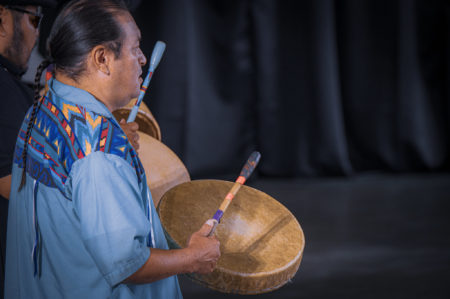
Patrick Twohy, S.J., a Jesuit priest who has lived and worked with Native Peoples for the past 50 years, told me:
“Pope Francis, true to his promise to come to the First Nations of Canada, made a sincere gesture of repentance, compassion, and desire for the restoration of good relationships with the Catholic Church and First Nations Peoples. Some First Nations people welcomed the Pope’s apology, and some said it wasn’t enough. The road to healing from the trauma among Native Peoples created by the boarding schools is long and arduous. Each Native person will confront the complex history of the boarding schools and make their decision whether they want to have any relationship with the Catholic Church or not.”
Will Newkirk, a student in LMU’s doctoral program in Leadership for Social justice and director of the American Indian Catholic Schools Network at the University of Notre Dame, gave me his perspective:
“Pope Francis’ visit to Canada to ask for forgiveness really was historic. So many boarding school survivors, descendants, and allies had been calling for this for years, and it often seemed quite unlikely to happen … especially given the nature of the Catholic Church. Clearly, though, Pope Francis made it a priority. His visit was not perfect – there were definite missteps and his presence alone created such a range of emotion for so many. As leader of the Catholic Church, this is inevitable. With this, a number of individuals I have talked to do believe this unprecedented apology was one step in the right direction. If the Catholic Church really is committed to asking for forgiveness and righting the wrongs of the past, there will be many, many more needed.”
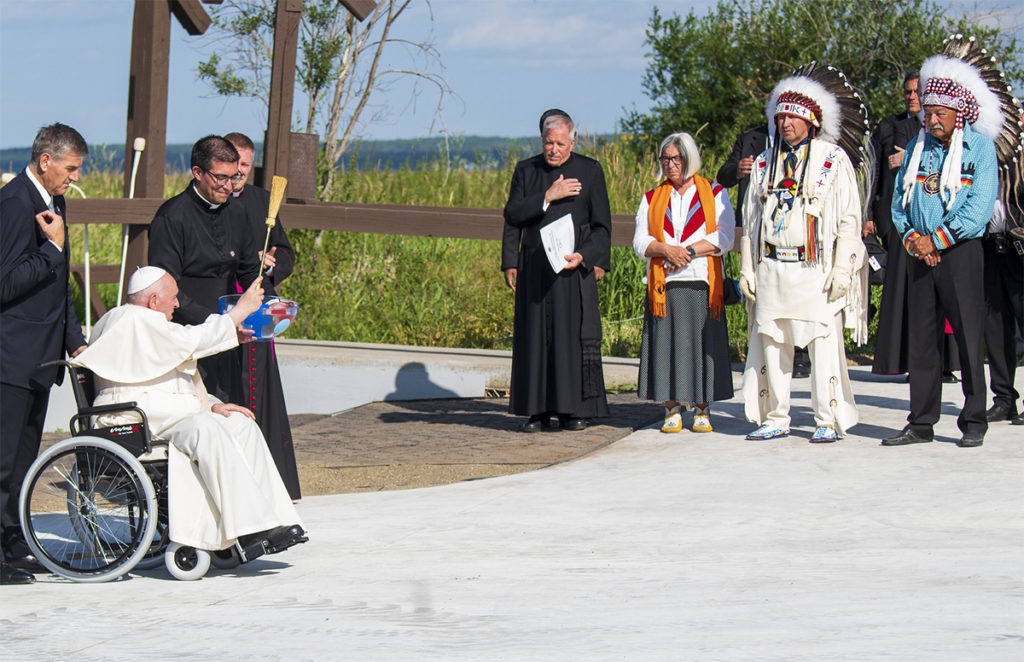
“If it really is possible, the Indigenous voice and experience needs to direct the process. The Church, though, can’t just take a backseat. It must intentionally acknowledge the truths of the past and play an active role that shows the Church is fully invested in a long process of healing with transformative potential. Such an experience will be one of relationship, and it will require hard work.”
I also spoke to Samuel Torres, Ed.D., an LMU doctoral alumnus and deputy chief executive officer for the National Native American Boarding School Healing Coalition (NABS). Torres first joined NABS as the director of research and programs, where his contributions have included leading research teams through projects such as the Indian Child Removal Study with the First Nations Repatriation Institute and the University of Minnesota, as well as the development of Indian boarding school research and coordinating with the U.S. Department of the Interior’s Federal Indian Boarding School Initiative. He concurred that elders and survivors of Catholic boarding schools are mixed on the pontiff’s apology; some found it meaningful and healing, and others felt it rang hollow and lacked commitment to action. He added:
“Given the massive social, economic, and political power asymmetry between Indigenous nations and the Catholic Church, reconciliation can only take place when the impacts of structural and epistemological colonialism are restored, transformed. Just as healing cannot meaningfully take place without justice, reconciliation is unattainable without transforming root causes and sources of domination, and in some cases dismantling, systems of oppression. The concept of reconciliation is a powerful one. It invites the coming together of two groups with the intent to resolve injustices, crimes, and conflicts. It is not a destination, but a framework requiring a deliberate intent to repair what has been harmed, an examination of those roots, and an ongoing vigilance to ensure such restoration. Reconciliation as a justice framework is an ambitious, and often ambiguous premise, whose aims are threatened if approached superficially or without regard to systemic root causes.”
In a lucent article a friend and executive director for truth and healing at Red Cloud Indian School (a former Indian boarding school in Pine Ridge, South Dakota), Maka Black Elk directs his writing to the Catholic community, outlines the complexities of forgiveness, and shares ways churches can rebuild relationships with tribal communities including:
- Denouncing the Doctrine of Discovery;
- Repatriation of artifacts, products of colonial theft;
- Church investment/involvement in revitalizing languages, spiritualities, and cultures of Indigenous peoples it once worked to destroy;
- Reasonable returning of land held by churches to Indigenous communities;
- Support for Indigenous communities in the recovery from various traumas experienced and passed on in the residential school system;
- Church leaders dialoguing with Indigenous communities at the local level;
- Grappling with the Church’s own need for internal healing.
For a powerful theological dissertation on the topic, I follow Black Elk in recommending Bret Salkeld’s article “Guilt, Responsibility, and Purgatory: How Traditional Catholic Teaching Can Help Us Think About Truth, Reconciliation, and Reparations.”
LMU is part of the global and local conversation around justice for Indigenous communities. The university has many opportunities to further its mission and enter into the space of learning, healing, and reparation. Our center for Truth, Racial Healing, and Transformation can help our campus concretize these goals. Our new core curriculum has an opportunity to have decolonial justice near its center. Our Indigenous research and scholarship fund must be amplified. And like other universities, our serious reckoning with local history, the legacy of colonialism, the names on our buildings, our public images and statues, who we hire, where we put our resources, and how we participate in our region must continue. Our preparation of students, be they educators, scientists, creatives, entrepreneurs, environmentalists, or lawyers must not shy away from important engagement with a tough history, a polarized present, and a fragile future. Individually and collectively, in small ways and institutional ones, we can contemplate what it means to heal and help heal.
DEI Buzz
- Visit the Native American and Indigenous Community hub throughout the year for events, resources, Zoom backgrounds and more.



